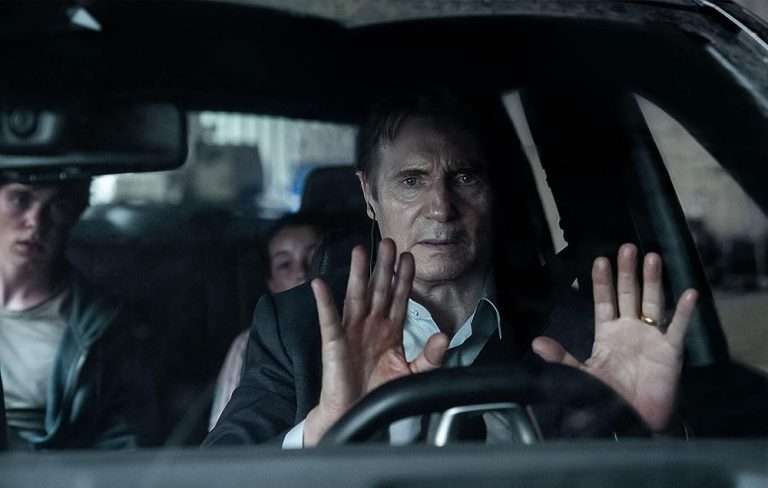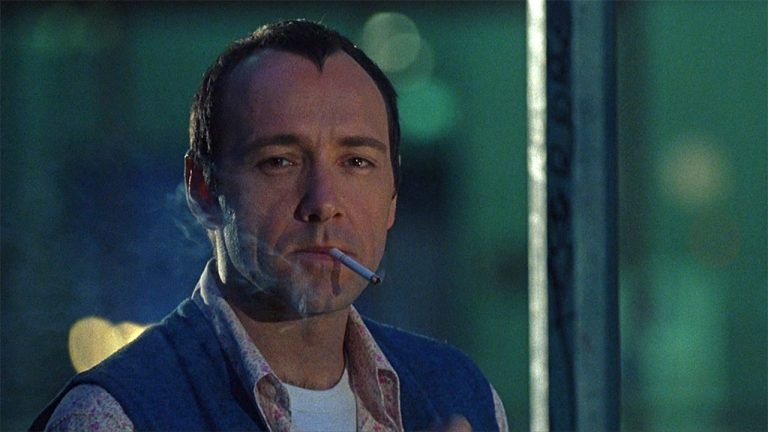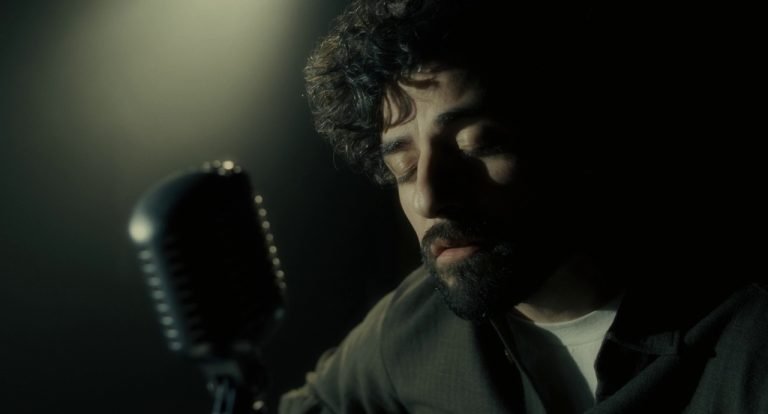“A House of Dynamite” (2025) addresses the issues we’re currently facing, but it’s not the only 2025 American film to do so. “One Battle After Another” and “Eddington” explored such issues as dark comedic westerns. While these films chiefly explored the miserable state of the US, they offered a mirror to the stark political divide across the world.
Unlike them, Kathryn Bigelow’s new film, written by Noah Oppenheim, presents a dystopia-like narrative that once seemed like a rare possibility. Now, it feels strikingly plausible, considering the monstrous, self-centered leaders in charge of nations, who won’t care while forcefully displacing a native population or nuking someone simply because of their mood swings. That is precisely why Bigelow’s film feels like a distressing horror tale and a wake-up call, since it could very well be our reality.
Yet, unlike Paul Thomas Anderson or Ari Aster’s films, which offer a socio-political critique, Noah Oppenheim’s script barely scratches the surface as a geopolitical thriller, resorting to the usual theatrics of emergency dramas and focusing more on inconsequential, personal-life details, thus feeling overlong and vapid. Of course, Bigelow conveys the utter helplessness in a doomsday scenario through different vantage points. Yet, Oppenheim’s ill-defined script makes this Netflix release one wanting more. The ending leaves us with more questions than answers, which might be unsatisfying since it doesn’t provide a clear resolution.
Spoilers Ahead
A House of Dynamite (2025) Plot Summary & Movie Synopsis:
“A House of Dynamite” centres around several high-level government officials feeling helpless as the United States is on the precipice of severe devastation by a nuclear strike.
Who are the characters in A House of Dynamite?
Kathryn Bigelow’s new thriller takes place almost entirely in the interior spaces where the top minds in the country’s political spheres are working to find a peaceful solution to a nuclear attack. We see events roughly from an early morning when Captain Olivia Walker (Rebecca Ferguson) and her associate, SCPO Officer Davis (Malachi Beasley) walk into the WHSR’s (White House Situation Room) watch room for their shift.
Walker gets a rundown of recent observations related to North Korea, besides Iran and its proxies. As it happens, FEMA (Federal Emergency Management Agency) official Cathy Rogers, who recently began working at the Office of National Continuity Programs) begins her shift, while the CNN representative Abby Jansing (Willa Fitzgerald) begins hers.
The script shows the following events unfold from different vantage points, the second of which is shown from the perspective of the USSTRATCOM (United States Strategic Command) officials and NSC’s Deputy NSA (National Security Advisor) Jake Baerington (Gabriel Basso). The third rewind is through the eyes of POTUS (Idris Elba), his aide and strategy advisor, Lieutenant Commander Robert Reeves (Jonah Hauer-King), and Secretary of Defense Reid Baker (Jared Harris).
What happens in A House of Dynamite?
The military base under Major Daniel Gonzalez’s (Anthony Ramos) supervision receives an alert about a ballistic missile (ICBM) over the Pacific Ocean. While initially assumed to be a missile test from North Korea, they can’t trace its point of origin. Yet, as the threat level worsens with the DEFCON level shifting from 4 to 2, they have a reason to believe that the Chicago area will be hit by the said missile in the next 20 minutes.
USSC Commander General Anthony Brady (Tracy Letts) strategically prepares to retaliate. He believes that a preemptive strike is the way to go for the US, considering a showcase of military strength a way to dissuade the adversaries from further attacks. However, Baerington disagrees with this option, while still trying to figure out the source.

The authorities are not certain whether it’s the Russians, the North Koreans, the Chinese, or any other forces, for that matter, responsible for an imminent nuclear war. They also do not know whether it is a missile test or a coordinated attack by a number of forces. Before trying to figure out the source, Baerington joins a video call with the President, the SecDef Baker, the WHSR, the USSC, and representatives from other Combatant Commands.
Initially, the army personnel under Major Gonzalez’s supervision launch two GBIs (Ground-Based Interceptors), hoping to knock down the missile. Baker is anxious because his daughter, Caroline (Kaitlyn Dever), lives in Chicago, considered to be the enemy’s primary target. So, in panic, he asks Baerington about the success rate of their current strategy.
Despite initial hesitation to supersede the chain of command, Baerington eventually reveals that there’s only a 61% chance it will prevent the attack, since what they are trying to do is almost like hitting the enemy’s bullet with theirs. So, they don’t know for certain whether they can save the people of Chicago. To Baker’s dismay, the strategy fails with both interceptors, which means the US fails to stop that attack. Unable to bring Caroline to a safe space before its impact, Baker presumably takes his own life.
A House of Dynamite (2025) Movie Ending Explained:
Baerington arrives in the PEOC (Presidential Emergency Operations Centre), followed by the senior WHSR official, Admiral Mark Miller (Jason Clarke). He contacts the National Security Agency’s North Korea expert Ana Park (Greta Lee) to discuss the source and their probable motives. She notes North Korea’s capability of such an attack.
On that call, Brady cites the failure to know the exact location of the initial attack in the Pacific Ocean by their DSP satellites. That means a responsible country might have been behind a technical mishap. So, instead of shortening their scope of answers, the call with Park widens it. By the time the call ends, the GBI-related strategy fails, leading Brady to push his approach of retaliation.
How does the ending convey the emptiness of an impending catastrophe?
Baerington communicates with the Russian Minister of Foreign Affairs to prevent their forces from retaliation, but fails to learn any constructive details to finalize the US’s further strategy. In this situation, the President is left with two options: suicide or surrender. Brady is against the latter since it would look like the US is letting the enemies get away with such an attack, but sticking to the former can escalate a nuclear war since those attacks would be based on assumptions rather than any concrete facts.
The ending of “A House of Dynamite” does not reveal the decision the President takes, leaving the catastrophic chain of events for the viewers to imagine. Still, it displays the terrifying personal stakes when people are left with simply preparing for the worst.
In the film’s chronologically final moments, Walker is asked to present a ‘dead list’ in case D.C. is the next target, while the president contemplates his decision about preemptive attack. These moments leave us with the weight of emptiness, since all the characters from the US feel helpless in this doomsday scenario. It is anticlimactic, since similar dramas resort to some sort of dramatic conclusion, usually showing the good side of the story winning against the bad one.
In this case, that doesn’t happen, which lets a numbing sensation linger in their minds. That seems to be the point of the ending. However, it doesn’t quite hit the same way it could have if the script had stuck to its ticking-bomb structure, leading to a dramatic crescendo, instead of repeating all those events.
The rewind approach dampens the overall impact since it breaks the tension instead of heightening it. While the first forty minutes (focused on Fergusson’s character) skillfully amp up the tension, and the second underlines the inescapability of a disaster, the third does not add anything substantial to the script.
So, over the course of its two-hour duration, the tension fizzles out, leaving us wondering why the same time is not spent on addressing the elephant/s in the room more competently. Not to say there’s nothing impressive about the script. Park, who has some of the crucial answers behind the puzzle, is seen watching the reenactment of the Battle of Gettysburg, known as the bloodiest battle in American military history, foreshadowing what the country is facing in the present. Yet, the high amount of time spent on personal moments also makes the film tedious as a white-knuckle thriller.









